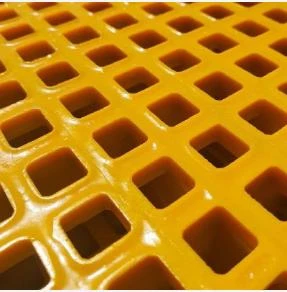loading...
- No. 9, Xingyuan South Street, Dongwaihuan Road, Zaoqiang County, Hengshui, Hebei, China
- admin@zjcomposites.com
- +86 15097380338
- Welcome to visit our website!
fiber reinforced plastic rod
Fiber Reinforced Plastic Rod A Versatile Material for Modern Applications
In recent years, advancements in material science have led to the development of innovative composites, among which fiber reinforced plastic (FRP) has emerged as a significant player. FRP combines the superior properties of two primary components fibers that confer strength and rigidity, and a plastic matrix that binds them together, providing resilience and resistance to environmental factors. One of the practical forms of FRP is the fiber reinforced plastic rod, which has found extensive applications across various industries due to its unique characteristics.
Understanding Fiber Reinforced Plastics
Fiber reinforced plastics are composite materials that utilize fibers—typically made of glass, carbon, or aramid—embedded in a polymer matrix, such as epoxy or polyester. This combination results in a material that exhibits enhanced mechanical properties compared to traditional plastics. The fibers provide added strength, stiffness, and thermal resistance, while the plastic matrix offers durability, chemical resistance, and less weight than metals.
The manufacturing process of FRP rods typically involves the lay-up method, pultrusion, or filament winding. Each technique allows for the precise alignment and orientation of the reinforcing fibers, thereby maximizing their load-bearing capabilities. Depending on the type of fiber used and the ratio of fiber to plastic, the properties of FRP rods can be tailored to meet specific requirements of different applications.
Applications of Fiber Reinforced Plastic Rods
1. Construction Industry FRP rods are increasingly being used in the construction sector, especially for reinforcing concrete structures. They provide corrosion resistance, lightweight properties, and high tensile strength, which make them ideal for applications in bridges, highways, and buildings. Additionally, their non-magnetic nature is beneficial for projects requiring electromagnetic neutrality, such as hospitals and research facilities.
2. Marine Applications The marine industry greatly benefits from the properties of fiber reinforced plastic rods. They are used in boat manufacturing, docks, and other marine structures due to their resistance to saltwater and moisture, ensuring longevity while reducing maintenance costs. This characteristic makes FRP rods preferable over traditional materials like wood or metal, which can succumb to corrosion or decay.
fiber reinforced plastic rod

3. Automotive Sector The automotive industry is taking strides toward lightweight materials to enhance fuel efficiency. Fiber reinforced plastic rods are employed in various vehicle components, contributing to a reduction in overall weight without compromising structural integrity. Their ability to withstand high stress while remaining lightweight is crucial for performance and safety enhancements.
4. Aerospace Industry In aerospace, weight is a critical factor affecting performance and efficiency. FRP rods are used in various applications, from structural components to interior fittings. They not only reduce weight but also improve the overall strength and durability of aircraft, enhancing safety and performance metrics.
5. Sports Equipment The sports industry utilizes fiber reinforced plastic rods for manufacturing lightweight yet durable gear, such as fishing rods, tennis rackets, and cycling components. The enhanced performance characteristics of FRP can contribute to better athletic performance and greater user satisfaction.
Environmental Impact and Sustainability
As industries strive for more sustainable practices, fiber reinforced plastic rods present a dual-edged solution. Their durability leads to longer-lasting products, reducing waste and the need for frequent replacements. However, it is essential to consider the environmental impact of the production and disposal of plastic-based materials. Ongoing research into bio-based matrices and recycling methods for FRP components is crucial to finding a balance between performance and environmental stewardship.
Conclusion
The fiber reinforced plastic rod is a testament to the advancements in composite materials, offering a plethora of benefits across multiple sectors. Its strength, lightweight properties, and resistance to environmental stresses make it an invaluable resource in modern applications ranging from construction to aerospace. As technology continues to evolve, the potential for FRP rods to contribute to innovative solutions and sustainable practices in various industries remains significant. The journey of fiber reinforced plastics is just beginning, and its future is poised to be as versatile and enduring as the materials themselves.
-
GRP Structures: The Future of Lightweight, High-Performance EngineeringNewsJun.20,2025
-
FRP Water Tank: High-Performance Storage for Corrosive and Clean Water SystemsNewsJun.20,2025
-
FRP Square Tube: The New Industry Standard for Chemical and Structural ApplicationsNewsJun.20,2025
-
FRP Pultruded Profiles: The Ultimate Choice for Lightweight Structural StrengthNewsJun.20,2025
-
FRP Handrails: The Safer, Smarter, and Stronger Choice for Modern InfrastructureNewsJun.20,2025
-
FRP Grating: The Smart Solution for Durable, Lightweight Industrial FlooringNewsJun.20,2025
-
Why Choose a Galvanized Water Tank for Your Storage NeedsNewsMay.21,2025
